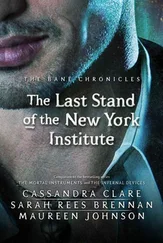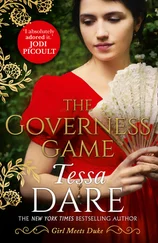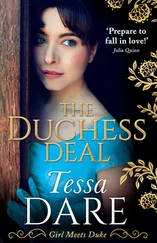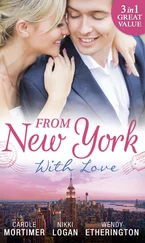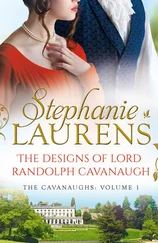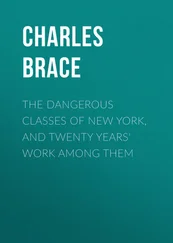He told me about attending a party of Columbia graduate students in sociology, which he found maddening. “I simply sat in a chair in a corner,” he said, “and one by one these guys would come up to me, sort of like approaching the pariah—curiosity stuff. They were working on their Ph.D.s, and after they’d introduced themselves I’d ask, ‘What are you working on?’ It would always be something like, ‘The Impact of Work-Play Relationships Among Lower Income Families on the South Side of the Block on 112th Street Between Amsterdam and Broadway.’ Then I would ask—” Mills paused, leaned forward, and in his most contemptuous voice, boomed, “Why? ” Obviously, these people weren’t “taking it big.”
Mills was not only a boss but a friend and advisor, taking a fatherly interest in my personal welfare as well as guiding my research. “Now Dan,” he counseled me, “you’re not married, and you’re probably not eating well with those other guys. If none of you can really cook”—he didn’t count spaghetti and cornmeal mush as real food—“you must get one of your girls to come over every Sunday night and cook you up a big stew that will last a week. You bottle it up in seven Mason jars, and then you have a good healthy meal instead of that bachelor stuff.” This was, of course, in the days when it was assumed that men couldn’t cook and women could, and should, though Mills himself was soon to take up the culinary arts, applying himself in the kitchen with the same enthusiasm he brought to everything else he did. When I came to a lunch he’d prepared in his cooking days and praised the fresh bread, he said, “My God, man, don’t you bake your own bread?”
Mills was full of advice that was often valuable and always entertaining, including what books I should read. He thrust James Agee’s Let Us Now Praise Famous Men on me when it was out of print and known only to a small, ardent coterie. It seems forgotten, now that Agee’s lyric work on sharecroppers is regarded as a classic, that Mills was one of the few who reviewed it admiringly after it was published, writing an incisive essay of praise in Dwight Macdonald’s magazine Politics . “You want to write journalism? Take that one, boy!” Mills said as he plucked the book from his shelf and pushed it toward me.
Mills introduced me to the Homestead, a restaurant that was famous for serving the biggest pieces of beef at the best prices anywhere in New York City. It was over in the meat-packing district, on the western fringe of Greenwich Village, and supposedly its proximity to the fresh meat coming in accounted for the great deals the popular, plain-style restaurant could give its customers. Mills was known to go there and after the meal say to the waiter, “I’ll have the same thing again.” He’d eat a second helping of everything, including the sirloin steak, and pie for dessert. He practiced what he preached.
As it turned out, the journalist in Princeton, New Jersey, who became my most important mentor and launched my career as a writer was not my drawling, down-home fellow Hoosier Barney Kilgore but a fast-talking, hip intellectual described at the time by William F. Buckley, Jr., as “Murray Kempton, pinup boy of the bohemian left, who writes an impressionistic column for the New York Post .” I was thrilled to learn that Kempton lived in Princeton with his wife and four young children, for I’d read his column during my Columbia days, and he’d become my idol.
Kempton’s fans were a cult, a rabid band who realized nobody anywhere was writing this kind of elegant, ironic, iconoclastic prose about the passing scene in New York and America—and in a newspaper . H. L. Mencken, from Kempton’s hometown of Baltimore, was probably the closest model. His liberal views were never orthodox; in fact, he and Buckley became fast friends as fellow intellectual raconteurs who sometimes seemed to be the only people who could comprehend their esoteric conversations. It wasn’t Murray’s politics that made the blood of his followers race, but his novelistic perception of current events and figures. For a nickel I got to read a new column by a journalistic Proust that was hot off the press three afternoons a week.
Kempton’s first book was published the season I went to work in Princeton, and I seized the opportunity to review it for the Packet on the grounds that he was a local man, a point I stressed in my lead, which ran: “Murray Kempton of Edgerstoune Road and also the New York Post has written a book that was published last week called Part of Our Time: Some Monuments and Ruins of the Nineteen Thirties .”
The book was a series of essaylike portraits of leading political and literary figures who were shaped by “the myth of our time” in the thirties, like Whittaker Chambers and Alger Hiss, and it was the first thing I read that gave me a sense of the passion and excitement of what had always seemed to me a drab and dreary decade, the hangover after the Roaring Twenties.
But the book was more than the sum of its parts or the political or historical significance of its subject. It was a young person’s book, a book that stirred the blood and caught the imagination of my friends and me, who not only read it but memorized parts and recited them aloud, as we had memorized the poetry of Yeats and Millay and that other dreamer in the guise of a journalist who brought ideas alive, John Reed. We took Kempton’s words as wisdom, coming not from some graybeard but a journalistic genius in his prime, who had seen into the heart of things and understood them for us. We called Part of Our Time “the Good Book.” It was our bible.
I can see Bill Chapman, the twenty-two-year-old copy boy who years later would be a foreign correspondent for the Washington Post , pacing the paint-peeling living room on West 92nd Street as we recited from Kempton’s book and drank Chianti. I still remember these words: “Each of us lives with a sword over his head. There are those who can ignore its shadow and those who cannot. Those who cannot are the ones who make the special myth of their time.”
Another passage switched on like a light in my mind for years afterward, in times of crisis far from New York, reminding me of the eerie power of Kempton’s prose to predict the inner feelings of our futures: “There were new endeavors and fresh disasters, for they are the way of life, and the art of life is to save enough of yourself from each disaster to be able to go on in something like your old image.”
In my review for the Princeton Packet I tried to sound like a critic, not just a fan. The next morning, after the paper came out, the landlady in my roominghouse shouted up the stairs that someone wanted to talk to me on the telephone. It was Murray Kempton, calling to thank me.
“You really dug the book,” he said, then hastened to explain he meant “dug” in the sense of “understood,” not just in its other sense, “liked.” I dug what he was telling me—in both senses of the word. He invited me to come by sometime and have a beer. I was there that afternoon.
Kempton had reddish hair in a crew cut like Mills’s, but unlike Mills he was strictly Ivy League straight in dress and appearance. No motorcycle gear for Murray: rep tie, tweed jacket, and cordovan shoes. He noticed other people’s clothes as well. When I introduced him to the literary agent James Oliver Brown, he complimented Jim on his English shoes. Once when I showed up in Murray’s office at the Post wearing a raggedy sport shirt and corduroys in need of a press, he looked at me with a grimace and said, “You look like something out of Judge Horowitz’s court.” That judge sat on juvenile delinquency cases.
Читать дальше

